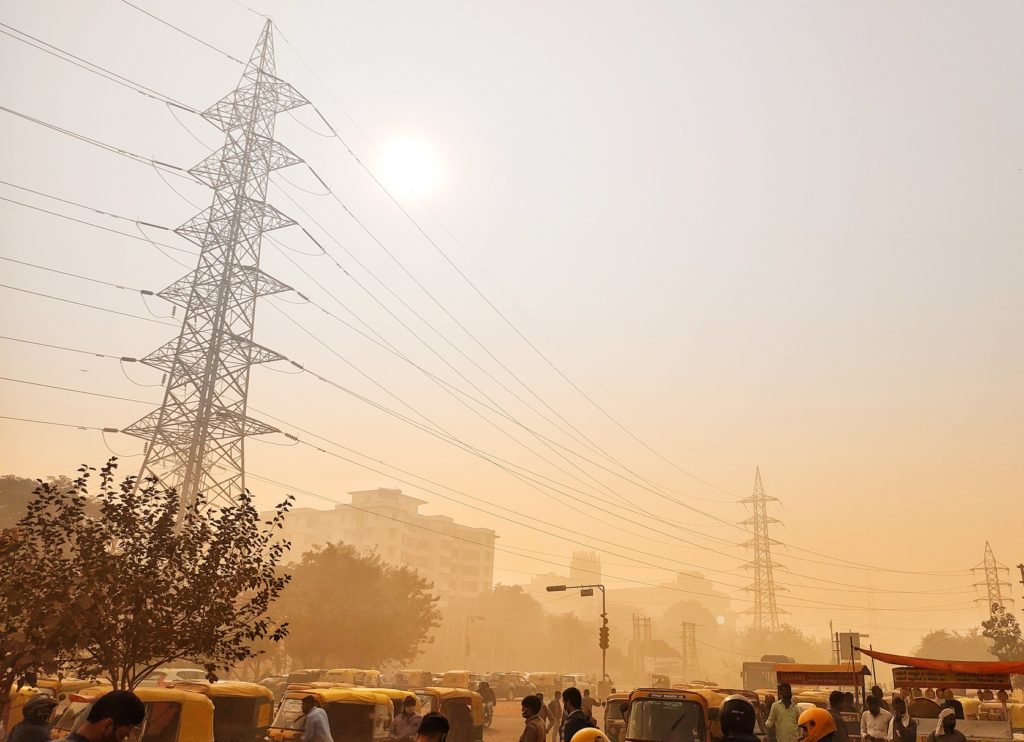Polluting Delhi
Pranav Sinha

Public health and damage to the environment in Delhi is irreversible. Unrestrained human activities are becoming a threat to inhabitants, the situation is worsening day by day. Recently the government woke up from its slumber and tried to dissolve the decades-old Environmental Pollution (Prevention and Control) Authority [EPCA] with a permanent body i.e., Commission for Air Quality Management (CAQM), entrusting special powers to coordinate the activities addressing air pollution. The air quality turning to the status of ‘very poor’ in Delhi and the adjoining states has raised an alarm that requires attention and hopefully this initiative in the form of an ordinance forming a specialized body (CAQM) to deal with any conflict in the redressal of regulation related to Air Quality among neighboring states will pave the way for stringent actions for any violation, any conflict or dispute in regards with jurisdiction and that will be addressed with a ‘writ’ issued by the Commission for Air Quality Management.
Delhi has its own past, the mixed success of Odd-Even formula for vehicles on the road had its own dimension, may be the direct impact would have been less but exposure to direct pollutant got reduced due to Odd-Even formula, people were somehow compelled to refrain using their vehicles on alternate days and had to opt for public transport or on sharing basis. But still, I consider Odd-Even to be the last resort to the declining condition of environment in Delhi.
According to CPCB, on November 01, 2020, the AQI was reported to be unhealthy with an average of 244 for PM10 (respirable particulate matter). Delhi Cantt. Reported the best AQI around 10. But, the share of stubble burning has its own rise and currently has a toxic contribution of 23% PM2.5 (lead pollutants). The share in stubble pollution is majorly due to the neighboring states but what about the internal pollution of Delhi. The total number of registered vehicles on the road of Delhi has crossed the mark of 1 crore and apart from this plying vehicles from other states and transiting vehicles are another burden for Delhi. Around 1 lakh trucks ply on the road of Delhi every day and most of them are diesel backed engine, sometimes these are illegally fueled by kerosene too. Now, this is a matter of grave concern, maybe the fine for polluting Delhi or any other region could be high but rarely these vehicles are checked or the vehicle generally present attenuated or fake Pollution Under Control (PUC) certificated when asked maybe the recently raised standards of mass emission could create an impact on the pollution control process. A study done by CIDM, Chandigarh reported that around 10,000 to 30,000 deaths in Delhi are directly or indirectly caused due to the pollution of Delhi. The same report states that “correlation between particulate levels in ambient air and attention-deficit hyperactivity disorder (ADHD) in kids”, this severity of Air pollution is so worrying, but still the unrestrained human activities are at a disturbing level.
The dubious condition of Air Quality in Delhi is due to unawareness of the environmental regulations among its residents. Compliance of Regulatory measures are generally dogged by the local residents and is considered as over hyped.
There are already available technologies in the market or are in the phase of development to control pollution, but I rather suggest stringent law and awareness campaign for the common public about the rising grave concern of pollution in Delhi. A recent development in techniques like PUSA Decomposer – developed by Indian Agriculture Research Institute (IARI), will reduce the time for decomposing paddy straws that are a burden for the marginal farmers. This can be a low-cost solution to manage crop residues. This Pusa Decomposer capsule reduces the time taken for the decomposition of crop residue and it costs around RS. 20 for 4 capsules. According to the System of Air Quality and Weather Forecasting And Research (SAFAR) burning crop residue in Haryana and Punjab contributed to 44% of pollution in NCR-Delhi. Another recent effort was the installation of smog towers in Delhi in the form of a pilot project by IIT Bombay and IIT Delhi in collaboration with the University of Minnesota under the directives of Supreme Court given to Central and Delhi government which is estimated to treat 250,000 to 600,00 cubic meters of air per day. The adoption of institutional measures of the Graded Response Action Plan can be a brilliant approach to curb the Air Pollution in Delhi which has recently come into force.
Thus, mitigating climate change should be an obligatory responsibility for all, efforts like preferring public transport rather than owning a new car for oneself, adoption of activities which reduces our worry for our future generation are the need of the hour. The Ecological ethics should prevail as one should realize the importance of social cost incurring to the society by the unrestricted and unrestrained activities of, we humans. This menace should be curbed to make the life of our future generation livable.
Disclaimer: The views presented in this article is of the author himself, this does not reflect the ideology of the organization. The views are personal and are for public address.

